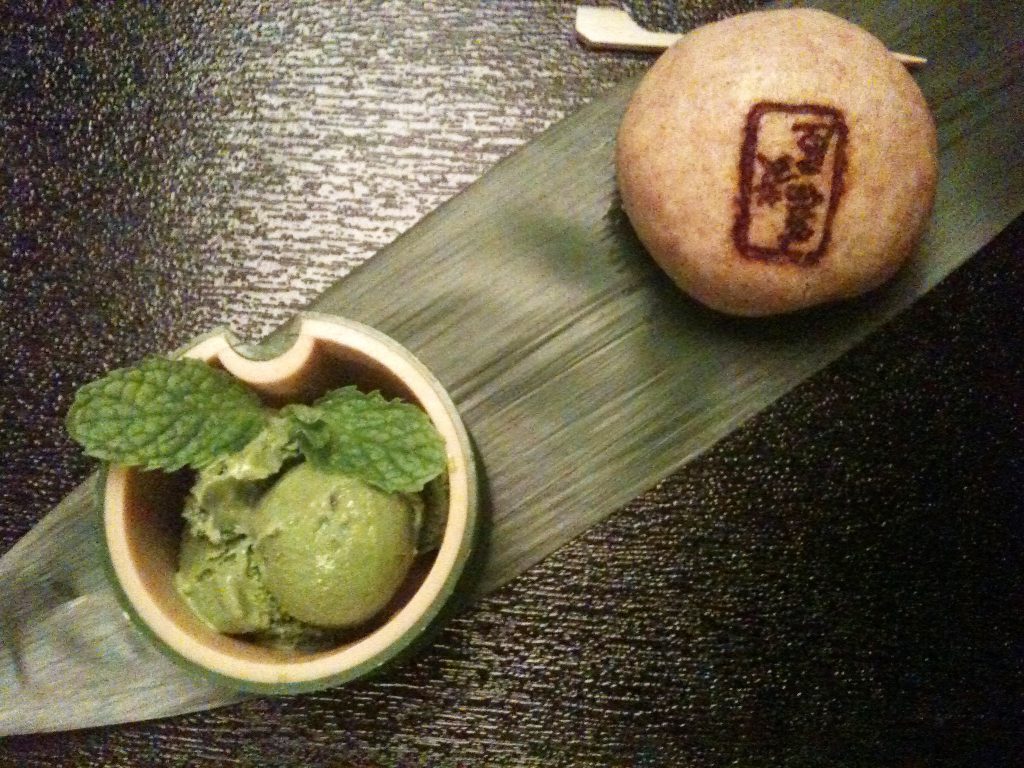 Neither Japanese nor Koreans are known for deserts, and I would always go for a killer chocolate cake than one of the rice cake confections, but sometimes chewy manju is just the thing, like after the other night after a satisfying bowl of udon at Sobaya. Of course, we wanted to eat at Ippudo just like all the other ramen crazied New Yorkers, but as usual, the wait for the table was more than an hour. Luckily for us, the nearby Sobaya is always calm and serene, we can always have a bowl of authentic udon or soba. Long live the noodles!
Neither Japanese nor Koreans are known for deserts, and I would always go for a killer chocolate cake than one of the rice cake confections, but sometimes chewy manju is just the thing, like after the other night after a satisfying bowl of udon at Sobaya. Of course, we wanted to eat at Ippudo just like all the other ramen crazied New Yorkers, but as usual, the wait for the table was more than an hour. Luckily for us, the nearby Sobaya is always calm and serene, we can always have a bowl of authentic udon or soba. Long live the noodles!
Manju (饅頭?) is a popular traditional Japanese confection, related to better known mochi. There are many varieties of manju, but most have an outside made from flour, rice powder and buckwheat and a filling of bean paste, made from boiled azuki beans and sugar. They are boiled together again and kneaded. According to Wikipedia, there are several varieties of bean paste used for manju, including koshian, tsubuan, and tsubushian.
 Kira Nam Greene’s work explores female sexuality, desire and control through figure and food still-life paintings, surrounded by complex patterns. Imbuing the feminist legacies of Pattern and Decoration Movement with transnational, multicultural motifs, Greene creates colorful paintings that are unique combinations of realism and abstraction, employing diverse media such as oil, acrylic, gouache, watercolor and colored pencil. Combining Pop Art tropes and transnationalism, she also examines the politics of food through the depiction of brand name food products, or junk food. Recently, Greene started a figurative painting series spurred by the 2016 Presidential Election, Women’s March, #metoo movement and ensuing crisis of conscience, this new body of work aspires to present the power of collective action by women.
Kira Nam Greene’s work explores female sexuality, desire and control through figure and food still-life paintings, surrounded by complex patterns. Imbuing the feminist legacies of Pattern and Decoration Movement with transnational, multicultural motifs, Greene creates colorful paintings that are unique combinations of realism and abstraction, employing diverse media such as oil, acrylic, gouache, watercolor and colored pencil. Combining Pop Art tropes and transnationalism, she also examines the politics of food through the depiction of brand name food products, or junk food. Recently, Greene started a figurative painting series spurred by the 2016 Presidential Election, Women’s March, #metoo movement and ensuing crisis of conscience, this new body of work aspires to present the power of collective action by women.